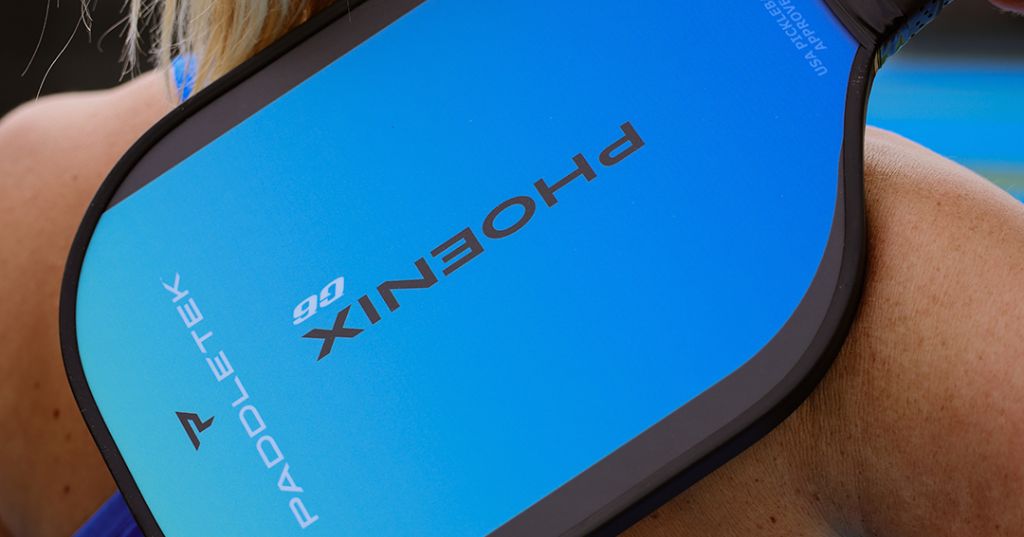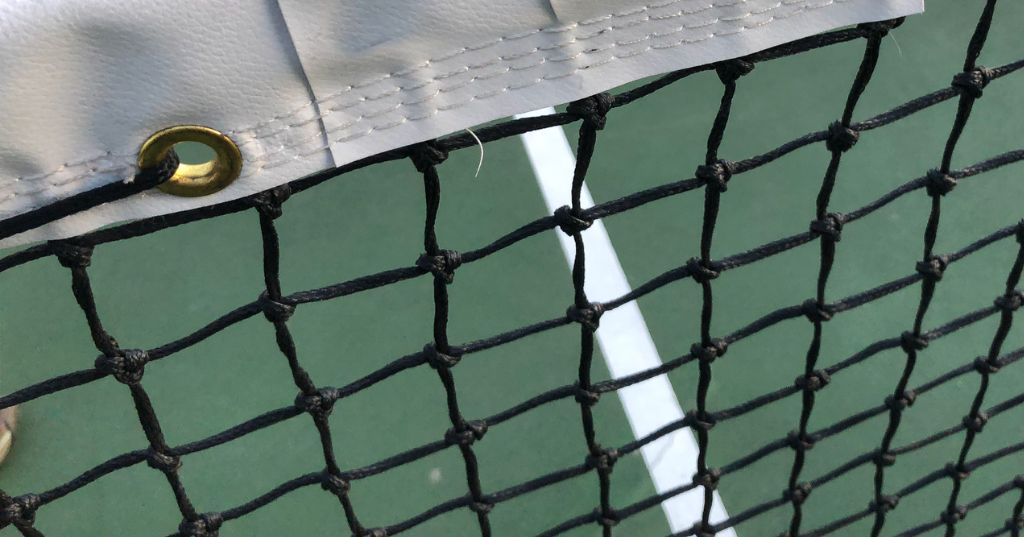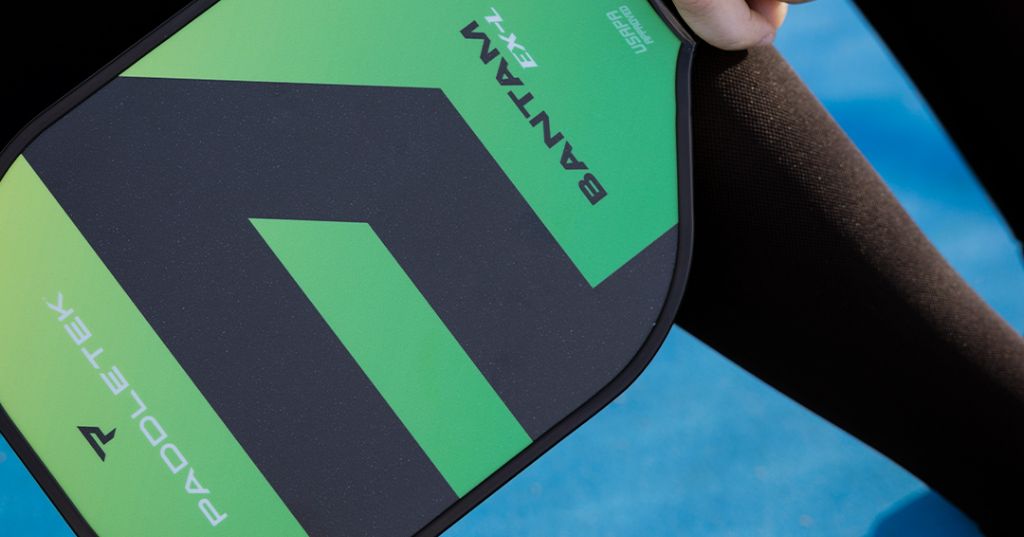Whether you’re just getting started in the pickleball game or you’ve been honing your skills for a while, there are always ways to take your game to the next level. From focusing on technique to mastering tactics, every player should be eager and willing to explore strategies that will help them fine-tune their pickleball skills.
Here are 5 key strategies you can employ to improve your pickleball prowess and become a better pickleball player:
- Play with those in your skill level or slightly above
- Stay loose but ready
- Progress to deep serves
- Monitor your progress
- Improve your smarts, not your energy output
As you rise through the ranks of pickleball, you're sure to learn an array of strategies along the way. But why not supercharge your progress and give yourself a competitive edge?
As we explore these 5 tips, you'll walk away with valuable insight to take your skills to new heights and be well on your way to becoming tournament-ready in no time!
What Are the 5 Key Strategies to Help You Become a Better Pickleball Player?
1. Play with Those in Your Skill Level or Slightly Above
With its family-centric appeal, it’s easy enough for anyone to pick up and play pickleball. But don't let the family-friendly atmosphere fool you – pickleball is no walk in the park. From seasoned veterans to total beginners, there are always new levels to reach and more skills to hone - but that's half the fun!
So how can you tell the difference in skills? Well, that's where player ratings come in.
If you're looking to get the lowdown on pickleball ratings, unsure how to tell who is on your level or otherwise, check out Paddletek's write-up on pickleball ratings and follow the 3 steps to find your rating in the process. But for the quick version of player ratings, let's break it down into the simplest form.
USA Pickleball classifies players at various skill levels between 1.0 and 5.5 and up. As you visit some pickleball courts and leagues, you might see designations for these players.
If you’re brand new to the game of pickleball, then you’re most likely a 1.0 or 2.0 player. At your level of skill and experience, you shouldn’t play against opponents any higher than a 2.5. If you do, then you’re going to lose, and lose badly.
Losing isn’t always the horrible thing we make it out to be and it can be an excellent learning experience.
That said, if the other player’s footwork, strategies, dinks, and volleys were so confusing to you that you can’t tell what happened, then you can’t learn anything.
When you do play with those in your skill level, we recommend having someone with more experience oversee the game.
This way, if you or your opponent makes a critical mistake regarding where on the court you can stand, how you’re scoring, or what you count as a fault, the monitor can mention it - helping you improve as a result.
After all, one of the worst things you can do when you’re still learning pickleball is to internalize incorrect rules. They’re harder to shake the longer you’ve been playing wrong, so it's far better to address the issues earlier.
2. Stay Loose but Ready
When you’re on the pickleball court and a game is in progress, you need to always be alert and ready to strike the ball.
If you got distracted or didn’t realize the round started and the ball happens to whiz right by you without you doing anything, that’s your mistake. If your inattention leads to a fault while your opponent is serving, then you’ve just cost yourself a point. That’s not a great way to start a game of pickleball, or to conclude one!
Don’t let yourself get caught napping on the court – stay alert and always be ready to hit back. So how do you do this?
Always focus on the pickleball, whether you’re serving or your opponent is. You do want to watch for the type of serve or return your opponent will do, as that will indicate how the ball will behave. But your eyes should always be glued to the ball.
Being ready doesn’t mean standing tense and rigid, by the way.
To stay in the game and get the most out of pickleball, we'd recommend the athletic stance (#3.) Keep your shoulders and knees aligned, and lean forward without over-arching your back or craning your neck - done correctly, this stance will force you to play more fluidly and stay loose, resulting in quicker and more powerful movements.
Having correct form helps protect you from injury and keeps you at the top of your game.
3. Progress to Deep Serves
If you're just starting with pickleball, mastering your serve can do wonders for taking your game to the next level! We've put together plenty of helpful resources on perfecting your serve and getting it consistent and accurate. Make sure to check them out – small tweaks in technique can make all the difference in the court.
When you've mastered your consistently accurate serves, the next step is to work on deeper ones. Deep serves will keep your opponents back and give experienced players an edge - it's a surefire way to tell a pickleball newbie from an expert!
Taking on tougher opponents in tournaments or going up to the next skill level in your league? If you want to succeed, then mastering deep serves is an absolute must!
Deep serves launch the pickleball farther into the service box, which forces your opponent past their baseline and increases their return distance.
If you can hit your deep serves to an opponent’s backhand, that’s even better. Most players are naturally weaker backhand compared to their forehand so you put them at a disadvantage.
You should practice deep serving before you implement it in games. In the beginning, you might find yourself hitting the ball out of bounds more than you'd like, so you need to practice gauging just how much power is needed to stay within bounds but also land in that last 6-12” of the court.
As you'd imagine, consistency might be an issue in the beginning, but don't give up - the more you practice, the better your accuracy will become. Also, keep in mind this applies to serve returns, the deeper the better as long as they stay in bounds!
And last, but most likely not least, don't forget to keep your opponents on their toes so they can't predict your next move. Mix up your serves, vary the depth and height, and throw in a few surprises.
If you want to stay ahead of the competition, it's essential to keep them guessing - or else they could easily shift their strategy to counter yours!
4. Monitor Your Progress
How do you know you’ve improved at pickleball? There are plenty of ways to tell, but the simplest starts by tracking your wins and losses during regular and tournament play.
You can also use the free skill assessment sheets provided by USA Pickleball. The sheets start at the 2.0 level and go all the way to 5.0. Each sheet includes a list of skills you should possess to play at that skill level. You can print out the sheets and check off each of your skills as you gain them.
It's never a bad idea to keep track of your progress with a friendly pickleball eyewitness. Get an unbiased opinion from someone who knows the ropes – your doubles partner or a trusted friend – and assess your abilities periodically.
Once you've mastered all the skills for one level, it's time to step up and reach for the next one! For instance, mastering all the concepts of 2.0-level play includes an entry-level grasp of:
- Basic rules knowledge
- Score-keeping
- Hand-eye coordination
- Good quickness and mobility
- How to serve and return a serve
- Where to stand
- How to volley
- How to hit a forehand and backhand
Once you have that under control you’ll be ready to play at a 2.5 level.
If you use USA Pickleball's skill assessment sheets, you'll use a scale rating of 0 - 3 for each category:
- 0 - You cannot execute the skill
- 1 - Indicates the execution is very poor
- 2 - This means your form is good but you need work
- 3 - Says your performance is consistent and solid
Getting a realistic evaluation of your pickleball skills is essential for setting goals and working towards them. Don't be fooled by overestimating yourself - you could call yourself a 5.0 player, but when you go up against a true 5.0, you'll soon realize what that rating means. So perhaps the best way to keep sharpening your skills is with honest evaluations from an unbiased source.
5. Improve Your Smarts, Not Your Energy Output
Does getting better at pickleball mean putting in more effort?
Yes and no. You’ll be able to move with amazing deftness if you improve your skills to a certain degree (at the 4.5 to 5.5 level or higher), and you can switch between serves effortlessly, but you’re not necessarily expending more physical effort.
Instead, you’re playing smarter. You’re looking at your opponent, sizing them up, watching how they play, and then responding according to what you know about your opponent.
As the saying goes, you’re playing chess not checkers. You’re still putting 100% into every effort, but you’re not overexerting yourself to try to get power or strength out of your techniques.
Playing smarter and not harder isn’t something you’ll be capable of overnight. It takes a lot of practice and many games on the pickleball court to learn how to do it and employ it effectively.
Reducing your intensity doesn’t mean reducing your effort or getting lazy. You’re not giving your opponent free points. You’re spending your energy wisely so you don’t get gassed midway through the game and lose points that you could have won.

The Most Important Strategy
At the end of the day, it's important to remember to have fun and enjoy the game. After all, that's why you picked up pickleball in the first place!
It doesn't always have to be about perfecting your technique or winning. Take some time out on the court to chat with your partner or opponents, crack jokes, and get to know each other.
Going in with the right attitude and approach can make all the difference in your pickleball journey, and make these 5 strategies feel more effortless. Plus, victory tastes much sweeter when it's combined with something you enjoy.



Leave a comment
This site is protected by hCaptcha and the hCaptcha Privacy Policy and Terms of Service apply.